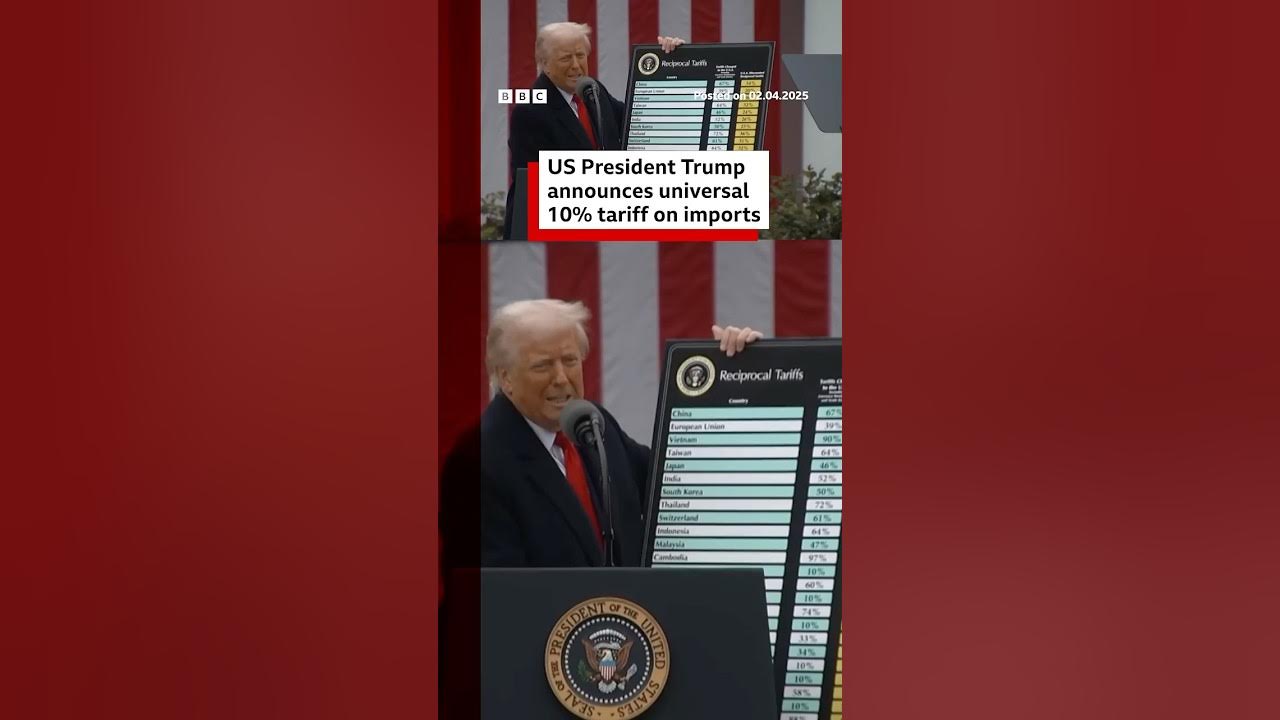US TARIFF NEWS 03-2025
- Get link
- X
- Other Apps
us tariff news latest

The latest us tariff news is causing ripples through global markets, with President Trump's proposed universal 10% tariff sparking intense debate. Analysts are scrambling to assess the potential impact on supply chains, consumer prices, and international trade relations. Manufacturers reliant on imported components are particularly concerned, while retailers fear a surge in costs that could dampen consumer spending. The implications for key trading partners, including China and the EU, remain uncertain, as retaliatory measures are speculated. Small businesses, already facing economic headwinds, are bracing for further instability. The agricultural sector, heavily dependent on exports, is also watching closely, fearing potential trade wars. 1 The long-term effects of this policy on American competitiveness are yet to be seen, as economists offer varying projections. The evolving us tariff news necessitates businesses to re-evaluate their strategies in this fluctuating economic landscape. 2
In a bold move, President Trump has announced a universal 10% tariff on all imports. This decision is rooted in a reciprocal approach to international trade, aiming to create a level playing field for American businesses. Let's dive into the specifics of this tariff and its potential implications for various countries and industries.
The Tariff Breakdown
President Trump made it clear that the tariffs will be structured in a way that reflects existing charges imposed by other nations. For instance, China currently charges the U.S. 67% in tariffs. In response, the U.S. will implement a discounted reciprocal tariff of 34%. This means that while China charges the U.S. significantly, the U.S. will charge them less, aiming to foster a more equitable trade environment.
The European Union, often viewed as a friendly trading partner, will not escape these tariffs either. The current tariff rate from the EU stands at 39%, and the U.S. plans to charge only 20%. This essentially halves the tariff imposed on American goods entering the EU.
Impacts on Specific Countries
Countries like Indonesia, Malaysia, and Cambodia are also in the spotlight. Cambodia, for instance, has a staggering tariff rate of 97%, which the U.S. plans to reduce to 49%. Such reductions aim to level the playing field, given that these nations have profited significantly from trade with the United States.
- United Kingdom: The U.K. will see a straightforward 10% tariff, mirroring the U.S. charge.
- Other Countries: A minimum baseline tariff of 10% will apply to all other nations to bolster the U.S. economy and prevent unfair practices.
Why Tariffs Matter
The introduction of tariffs is not just a political statement; it has real implications for the American economy. By charging these tariffs, the U.S. aims to rebuild its economy while simultaneously discouraging cheating in international trade. The goal is to create a fairer system where American businesses can thrive against foreign competition that often benefits from lower tariffs.
Reactions and Concerns
While the intention is clear, the announcement has sparked a variety of reactions. Critics argue that these tariffs could lead to increased prices for consumers and retaliatory measures from other countries. As history has shown, trade wars can escalate quickly, leading to a cycle of tariffs that can hurt all parties involved.
Supporters of the tariffs believe that this move is necessary to protect American jobs and industries that have suffered under unfair trade practices. They argue that the long-term benefits will outweigh the short-term challenges.
Potential Consequences for Consumers
As tariffs are implemented, consumers may face higher prices on imported goods. The increased costs associated with tariffs often get passed down to consumers, leading to a rise in everyday expenses. For example, products that are heavily reliant on imported materials may see significant price hikes.
Impact on Supply Chains
Businesses will also need to navigate the complexities of adjusting their supply chains. Companies that rely on imported components may find their costs rising, forcing them to make difficult decisions about pricing, sourcing, and even product availability.
Looking Ahead
The introduction of a universal 10% tariff is a significant shift in U.S. trade policy. As the global economic landscape continues to evolve, all eyes will be on how these changes affect not just the U.S. economy, but also the economies of countries around the world.
In conclusion, while the intention behind these tariffs is to create a fairer trade environment, the potential consequences are vast and complex. As businesses and consumers adapt to this new reality, ongoing dialogue and analysis will be crucial in navigating the challenges ahead.
- Get link
- X
- Other Apps
Comments
Post a Comment